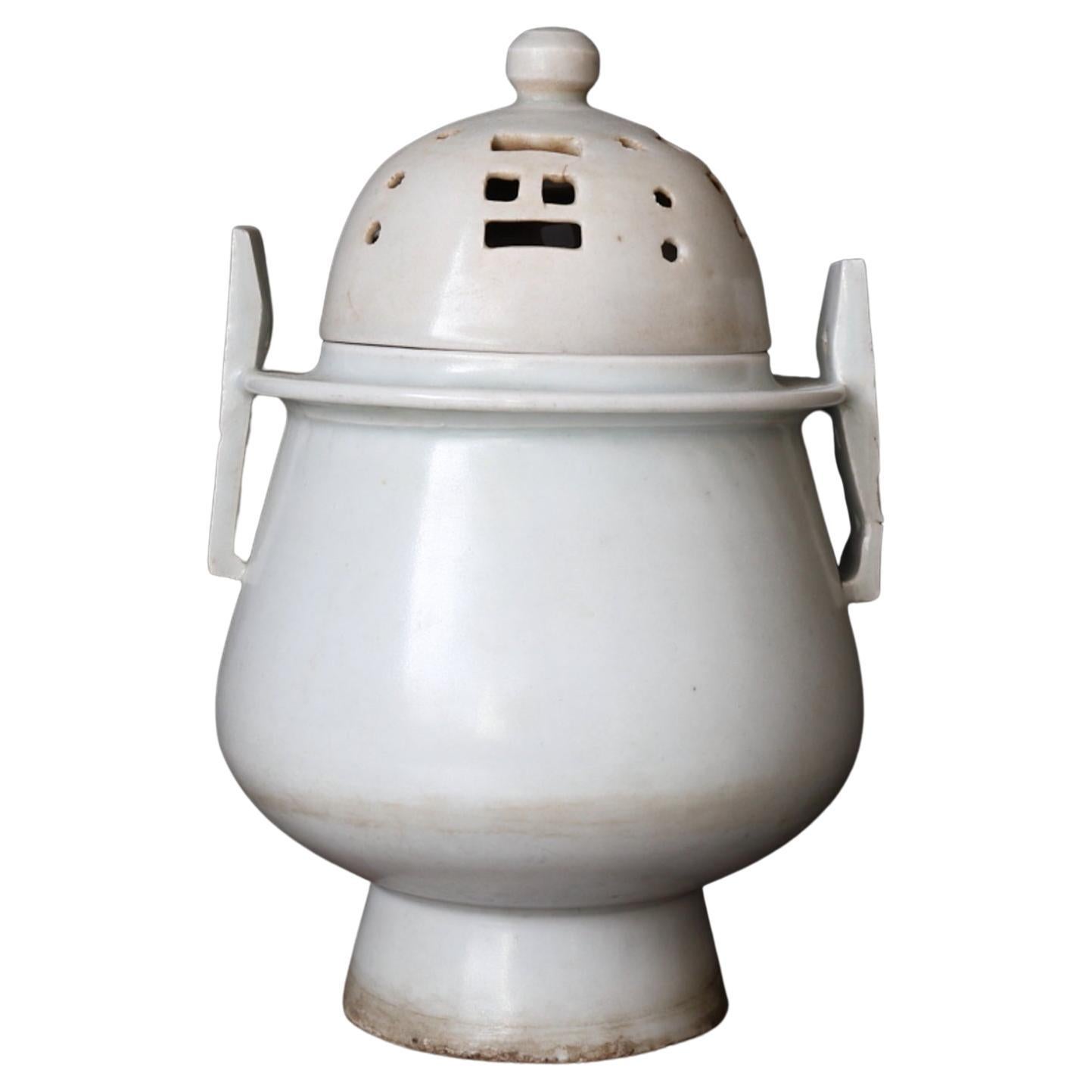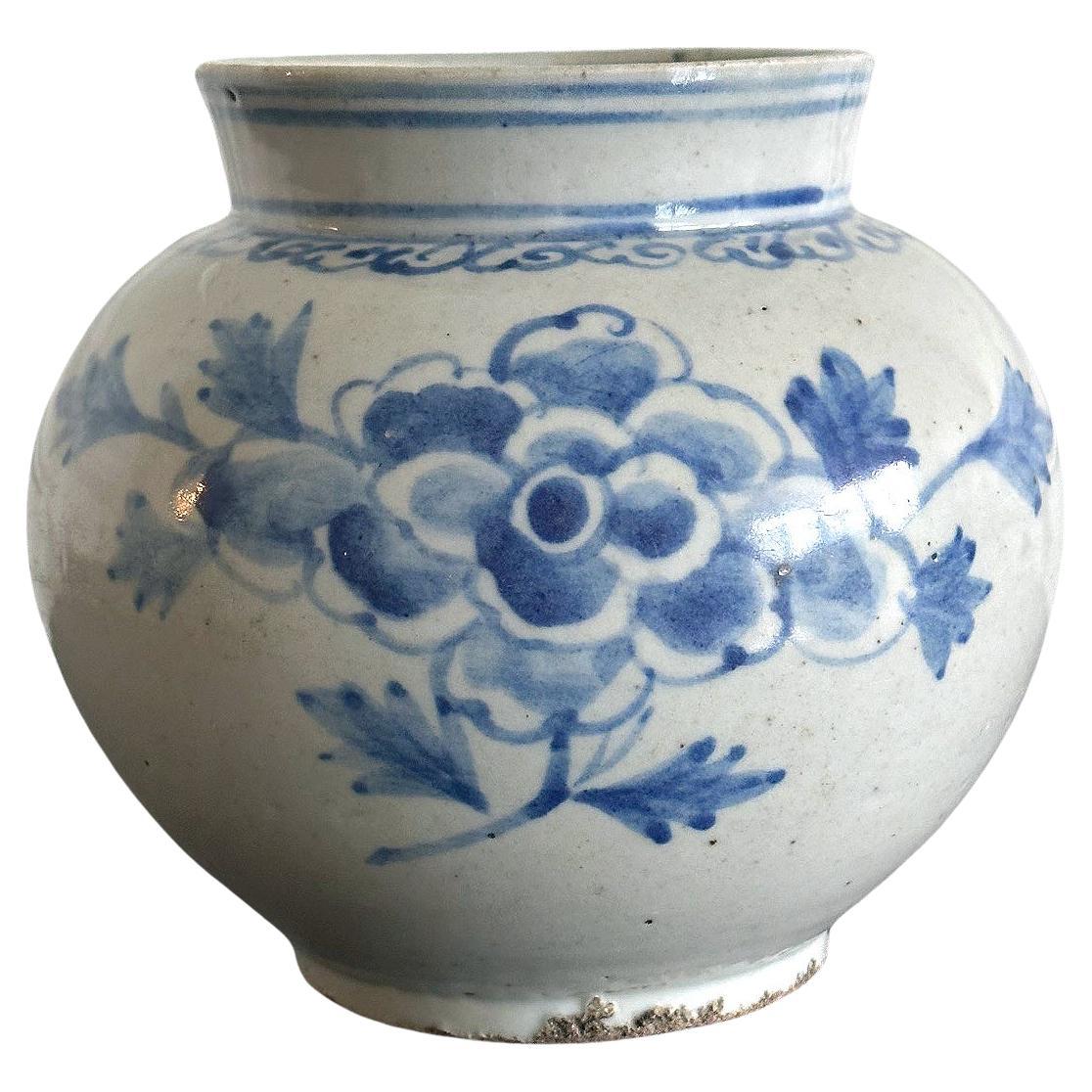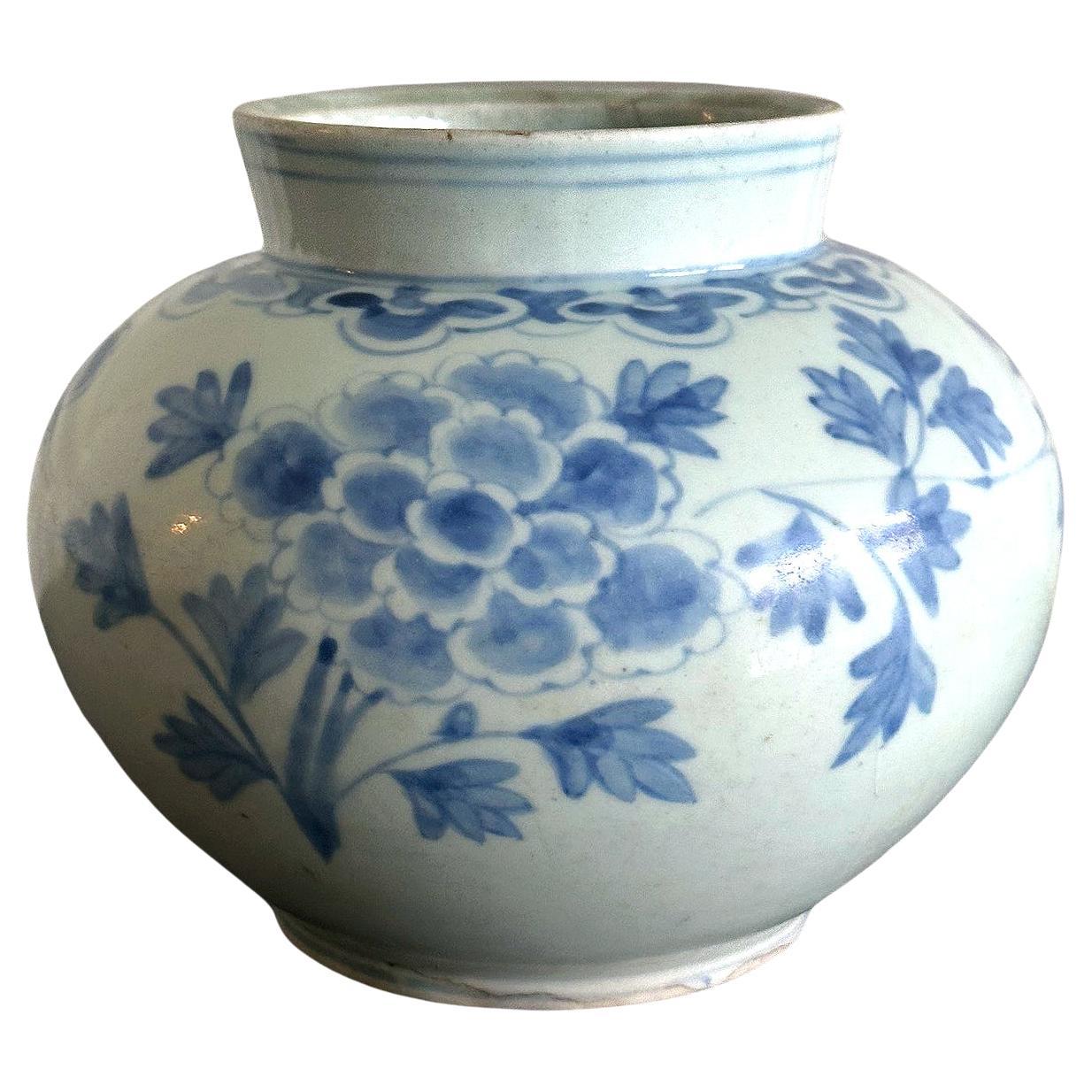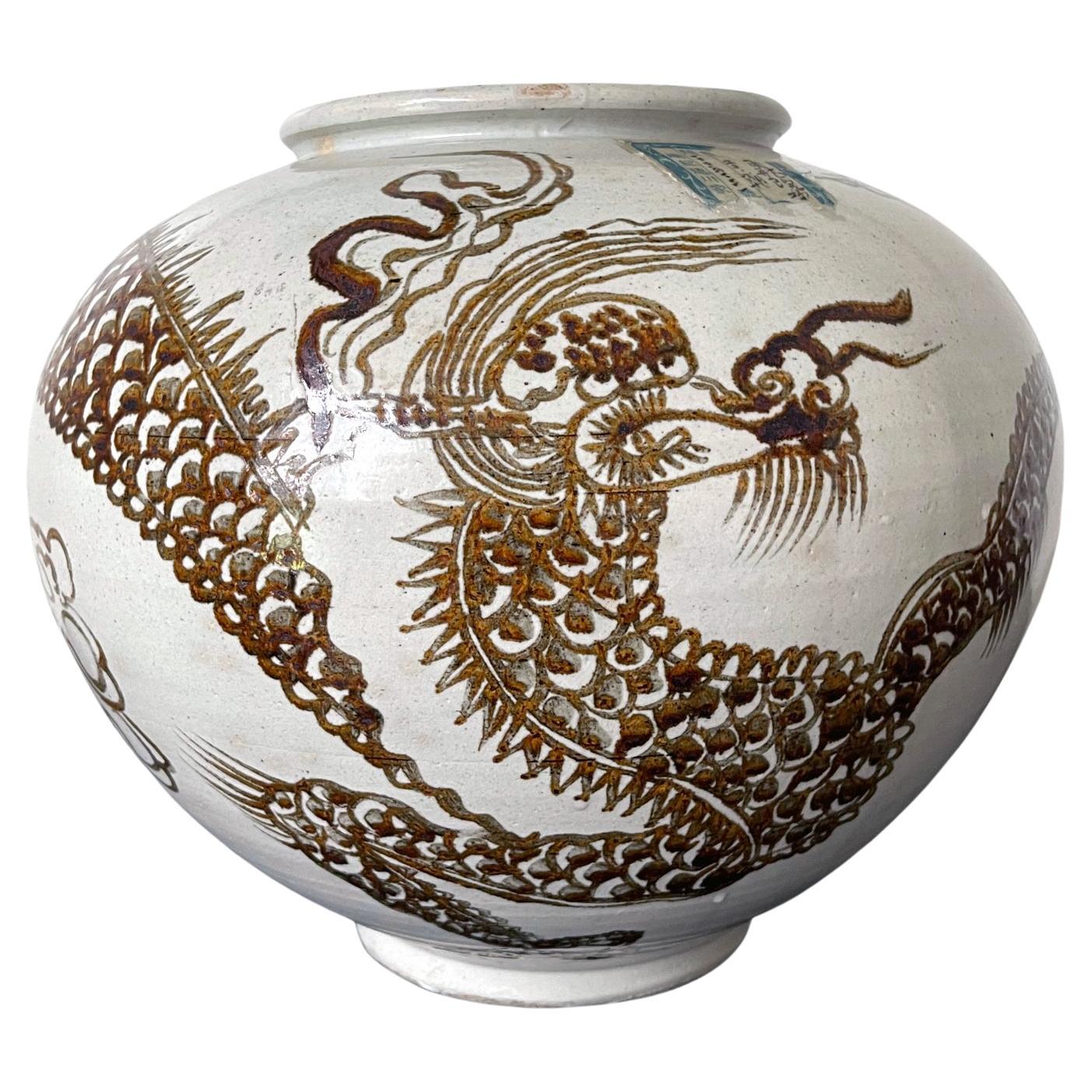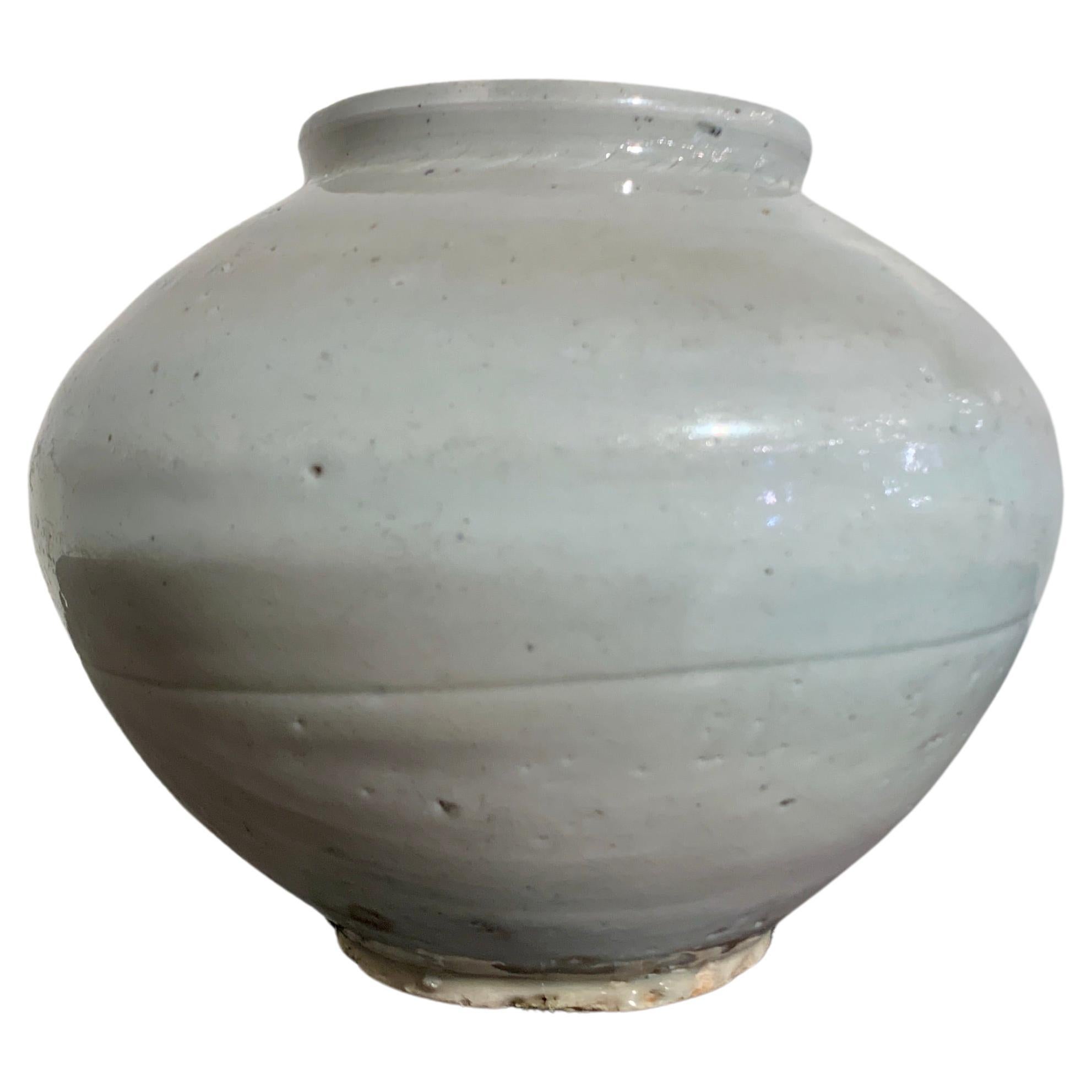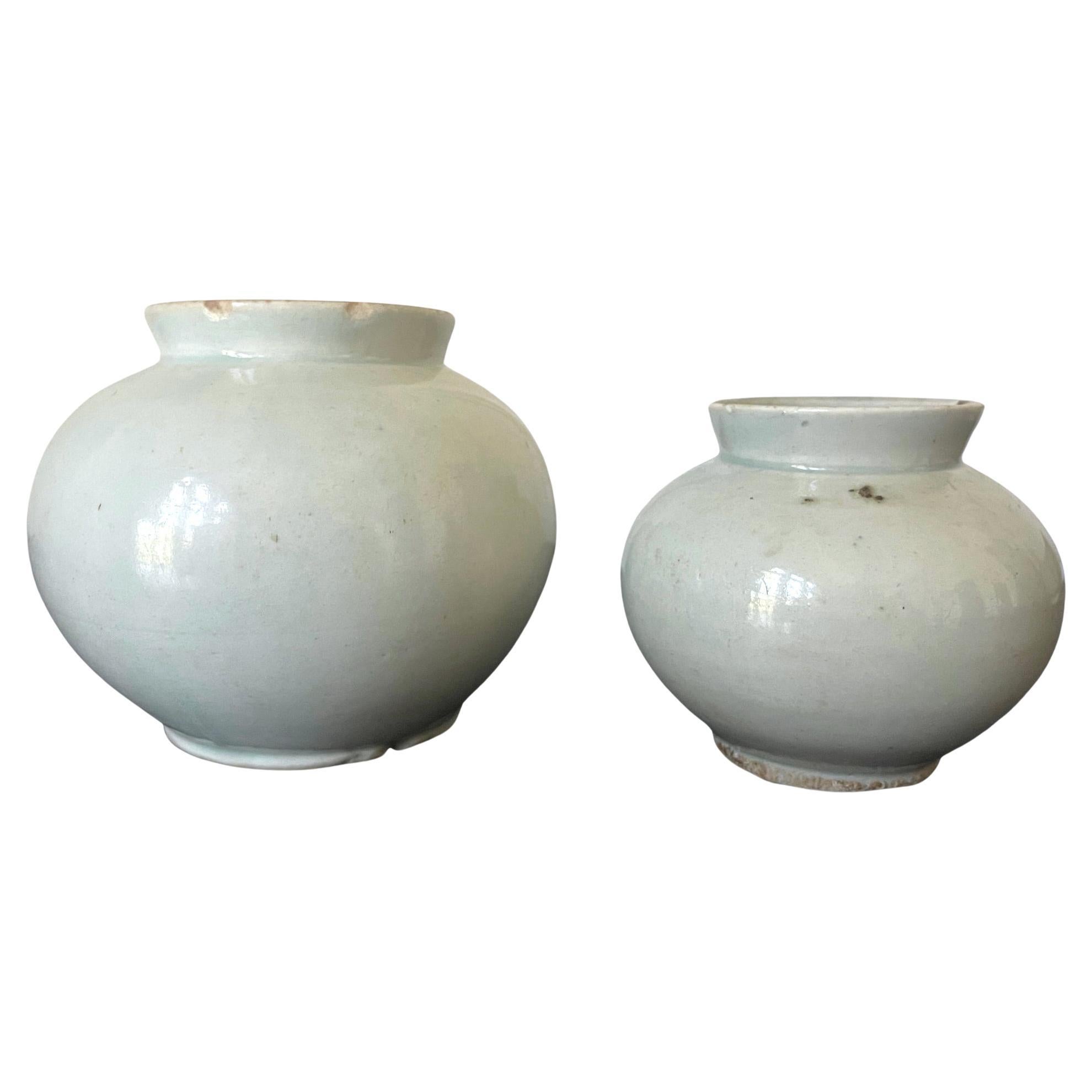Items Similar to White Porcelain Moon Jar, Joseon Dynasty / 1392-1897
Want more images or videos?
Request additional images or videos from the seller
1 of 21
White Porcelain Moon Jar, Joseon Dynasty / 1392-1897
About the Item
This is a white porcelain jar from the mid-Joseon period, also known as a "Talhunari" or "moon jar". During the Joseon Dynasty, which was strongly influenced by Confucianism, the purity of white porcelain was particularly prized in its artistic expression due to its Confucian sensitivity. The defining characteristic of white porcelain during this period was its pure white color, but there were many subtle variations in the white hues, with some being classified as milky white, snowy white, ashen white, and bluish white.
The term "Talhunari" means "moon jar" in Korean, and it refers to the large, round shape of the jar, resembling a full moon. It was named by Kim Whanki, a representative abstract painter of Korea. The soft, curving lines and sturdy body that seems to embrace the full moon give the jar both power and tranquility. This type of jar was produced in large quantities during the 17th century.
The white of the moon jar is not the pure white of early Joseon porcelain, nor the ashen white of mid-Joseon period, nor the bluish-white often produced at the official kilns. Generally, it is referred to as milky white, but not all moon jars are the same. In many cases, a range of different white hues can be found within a single vessel. Additionally, some moon jars may have yellowish spots caused by oxidation or incomplete combustion, or discoloration caused by the seepage of liquids.
Moon jars always exhibit different tones of white and subtly change over time, likely due to their organic composition. The variety of these changing white tones may be what attracts us to them.
This piece is a sphere that is appropriately called a "Moon Jar". There's one place inside the jar where water retention has been repaired, and there are scythe scratches, stains, etc. on the top of the foot. However, I think this is a good quality piece for this type of jar. It is 48 cm tall and large in size, and it has a strong presence. Despite being a large Moon Jar, the top and bottom parts seem to have been made at once, rather than being joined together. It has a very attractive, languid whiteness.
- Dimensions:Height: 18.9 in (48 cm)Width: 18.9 in (48 cm)Depth: 18.9 in (48 cm)
- Materials and Techniques:
- Place of Origin:
- Period:
- Date of Manufacture:1392-1897CE
- Condition:Repaired: Inside the pot, there is a repair for water stoppage.
- Seller Location:Kyoto-shi, JP
- Reference Number:1stDibs: LU7673234389412
About the Seller
No Reviews Yet
Vetted Seller
These experienced sellers undergo a comprehensive evaluation by our team of in-house experts.
Established in 2012
1stDibs seller since 2022
- ShippingRetrieving quote...Ships From: Kyoto-shi, Japan
- Return PolicyA return for this item may be initiated within 2 days of delivery.
More From This SellerView All
- White Porcelain Incense Burner / Korean Antique / Joseon Dynasty/1392 - 1897 CELocated in Kyoto-shi, KyotoThis incense burner presents the characteristics of a typical Yi Dynasty Joseon Dynasty incense burner with a body that rises smoothly from the base, openworked ears and a semi-circu...Category
Antique 17th Century Korean Antiquities
MaterialsCeramic
- Moon Jar / Korean Antique vase / Joseon Dynasty / 18th CenturyLocated in Kyoto-shi, KyotoIt's a wonderful moon jar. It is a rare size that is suitable for the alcove of a Japanese tea room. It is shaped at once without connecting the uppe...Category
Antique 18th Century Korean Antiquities
MaterialsCeramic
- Moon Jar 'Dalhanari', Lot3 / 17th Century / Korean Antiques / Joseon DynastyLocated in Kyoto-shi, KyotoThis is a white porcelain jar from the mid-Joseon period, also known as a "Talhunari" or "moon jar". During the Joseon Dynasty, which was strongly influenced by Confucianism, the purity of white porcelain was particularly prized in its artistic expression due to its Confucian sensitivity. The defining characteristic of white porcelain during this period was its pure white color, but there were many subtle variations in the white hues, with some being classified as milky white, snowy white, ashen white, and bluish white. The term "Talhunari" means "moon jar" in Korean, and it refers to the large, round shape of the jar, resembling a full moon. It was named by Kim Whanki, a representative abstract painter of Korea. The soft, curving lines and sturdy body that seems to embrace the full moon give the jar both power and tranquility. This type of jar was produced in large quantities during the 17th century. The white of the moon jar is not the pure white of early Joseon porcelain...Category
Antique 17th Century Korean Ceramics
MaterialsCeramic, Porcelain
- Moon Jar 'Dalhanari' - Lot2 / 17th Century / Korean Antiques / Joseon DynastyLocated in Kyoto-shi, KyotoThis is a white porcelain jar from the mid-Joseon period, also known as a "Talhunari" or "moon jar". During the Joseon Dynasty, which was strongly influenced by Confucianism, the purity of white porcelain was particularly prized in its artistic expression due to its Confucian sensitivity. The defining characteristic of white porcelain during this period was its pure white color, but there were many subtle variations in the white hues, with some being classified as milky white, snowy white, ashen white, and bluish white. The term "Talhunari" means "moon jar" in Korean, and it refers to the large, round shape of the jar, resembling a full moon. It was named by Kim Whanki, a representative abstract painter of Korea. The soft, curving lines and sturdy body that seems to embrace the full moon give the jar both power and tranquility. This type of jar was produced in large quantities during the 17th century. The white of the moon jar is not the pure white of early Joseon porcelain...Category
Antique 17th Century Korean Antiquities
MaterialsCeramic, Porcelain
- White Porcelain Vase / 17th Century / Korean Antiques / Joseon DynastyLocated in Kyoto-shi, KyotoThis product is a white porcelain bottle from the Joseon Dynasty. People in those days used bottles like this to make soap from waste oil. With use, the porcelain frayed and curle...Category
Antique 17th Century Antiquities
MaterialsCeramic, Porcelain
- Longquan Celadon Plate / Chinese Antique / Song to Yuan Dynasty / 13th CenturyLocated in Kyoto-shi, KyotoThe Longquan kiln, situated in Longquan City of China's Zhejiang Province, thrived in the Song and Yuan eras. It is characterized by its beautiful green celadon ware, created by appl...Category
Antique 15th Century and Earlier Chinese Ceramics
MaterialsCeramic, Celadon
You May Also Like
- Korean Ceramic Moon Jar with Dragon Joseon DynastyLocated in Atlanta, GAOn offer is a large Korean ceramic storage jar (hangari) with white glaze and iron red underglaze dragon design. The globular shaped jar derived its form from the Moon Jar of the ear...Category
Antique 18th Century Korean Archaistic Ceramics
MaterialsCeramic
- Antique Korean Porcelain Peony Jar Joseon DynastyLocated in Atlanta, GAA Korean white porcelain jar with underglaze blue painting of large peonies with leaves circa second half of 19th century, Joseon Dynasty. Considered associated with Punwon-ri kilns ...Category
Antique Late 19th Century Korean Other Ceramics
MaterialsPorcelain
- Antique Korean Porcelain Peony Jar Joseon DynastyLocated in Atlanta, GAA Korean white porcelain jar with underglaze blue painting of large peonies with leaves circa second half of 19th century, Joseon Dynasty. Considered associated with Punwon-ri kilns ...Category
Antique Late 19th Century Korean Other Ceramics
MaterialsPorcelain
- Small Korean White Glazed Porcelain Moon Jar, Joseon Dynasty, 18th/19th CenturyLocated in Austin, TXA subtle and sublime small Korean white glazed porcelain moon jar, Joseon Dynasty, 18th/19th century, Korea. The small moon jar of typical form, ...Category
Antique Early 1800s Ceramics
MaterialsPorcelain
- Two Korean White Ceramic Jars Joseon DynastyLocated in Atlanta, GATwo ensuite Korean porcelain jars circa early 19th century Joseon Dynasty, attributed to Punwon-ri ware and measures 5.5" diameter x 4" height and...Category
Antique Early 19th Century Korean Archaistic Ceramics
MaterialsCeramic
- Antique Korean Porcelain Jar with Pheonix Design Joseon DynastyLocated in Atlanta, GAA korean white porcelain jar with underglaze blue paint circa late 19th century toward the end of Joseon Dynasty. Porcelain jars of this elongated form with swell shoulder, wide mout...Category
Antique Late 19th Century Other Ceramics
MaterialsPorcelain
Recently Viewed
View AllMore Ways To Browse
Gosu Blue
Hatcher Cargo
Joseon Celadon
Korean Celadon Bowl
Blue And White Armorial Export China
19th Century Ginger Jar Rose
Bencharong Porcelain
Kutani Geisha
Kutani Yaki
Large Satsuma Plate
Qing Floor Vase
Shumei Fujii
19c Chinese Cloisonne
Kitaoji Rosanjin
Ming Jiajing
Thai Bencharong
Antique Rosewood Pottery
Chinese Porcelain Censor
